Lobotomy, also known as leucotomy, is a neurosurgical operation that involves severing connections in the brain’s prefrontal lobe. Doctors first began manipulating the brain in the late 1880s in an attempt to calm patients.
Swiss physician Gottlieb Burkhardt removed parts of the cortex from the brains of patients with auditory hallucinations and other symptoms of schizophrenia, noting that it made them calmer. However, the procedure led to the death of one patient with another committing suicide. Regardless, it is considered one of the most barbaric procedures ever used on people with mental illnesses.
Unfortunately, lobotomies were widely performed for more than two decades as a treatment for schizophrenia, manic depression, and bipolar disorder, among other mental illnesses. This happened because when the procedure was invented there were no beneficial ways to treat mental illness.
People were looking for “pretty desperate” kinds of intervention. Thankfully, with the rise of pharmacology and various medications, lobotomies are no longer a common practice. These are 25 Petrifying and Brutal Facts About Lobotomies.

Lobotomy means “cutting a lobe of the brain”
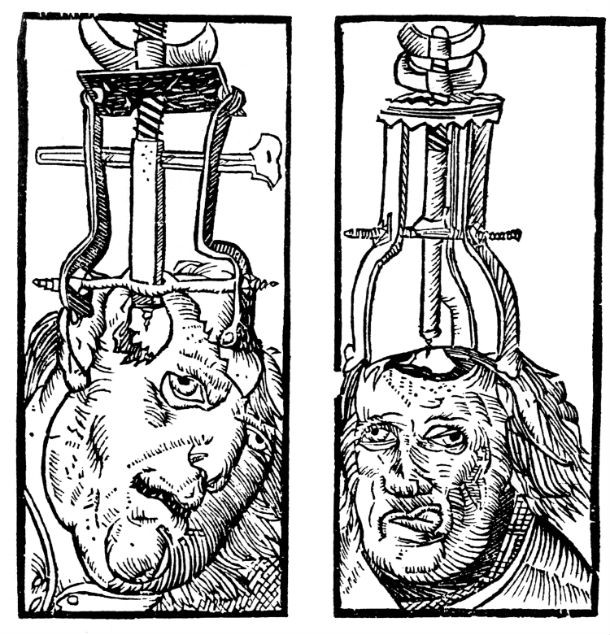 Source: psychcentral.com, Image: Wikipedia
Source: psychcentral.com, Image: Wikipedia Lobotomy of the frontal lobe was a very popular procedure in early twentieth century and was recommended by psychiatrists to alleviate symptoms of mental illnesses.
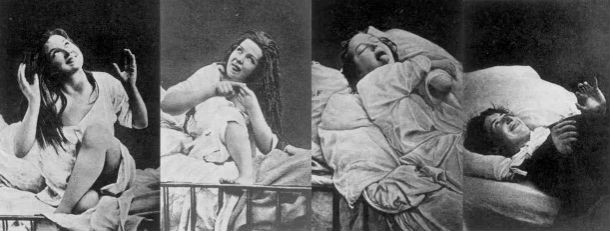 Source: psychcentral.com, Image: Wikipedia
Source: psychcentral.com, Image: Wikipedia Today, it is more commonly used in North America than elsewhere on the planet.
 Source: psychcentral.com, Image: Wikipedia
Source: psychcentral.com, Image: Wikipedia According to some sources, the lobotomy was the brainchild of Friederich Golz, who experimented on his dogs to see what would happen. Two years later, in 1892, Gottlieb Burkhardt used the procedure on six schizophrenic patients. The procedure seemed to have a calming effect on the four patients who survived the surgery.
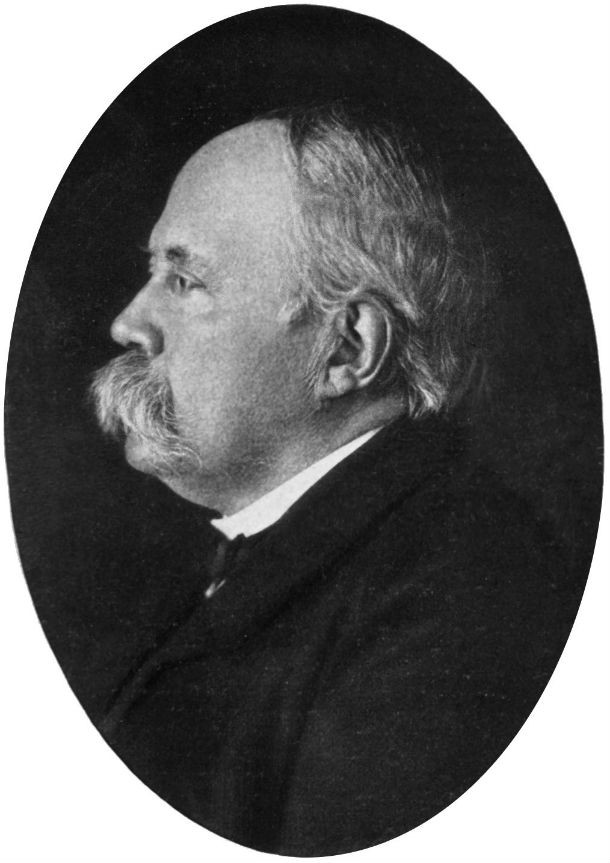 Source: psychcentral.com, Image: commons.wikimedia.org
Source: psychcentral.com, Image: commons.wikimedia.org According to other sources, the concept of the lobotomy was first invented after neurologist John Fulton noticed how a chimpanzee became much calmer after surgery that destroyed the connections between the frontal lobe and areas below the cerebral hemispheres that govern the emotions.
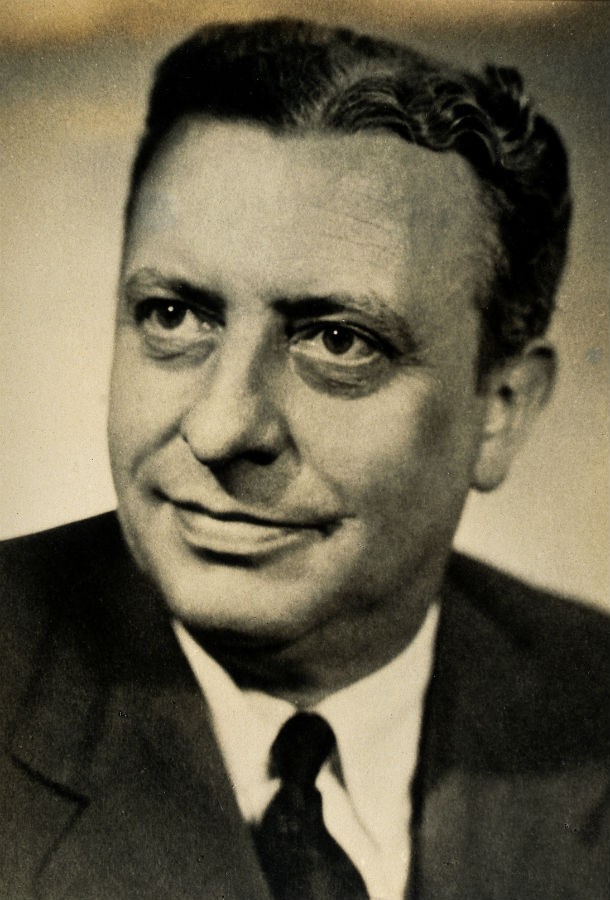 Source: psychcentral.com, Image: Wikipedia
Source: psychcentral.com, Image: Wikipedia On November 12, 1935, a Portuguese neurosurgeon, Almeida Lima, performed the first human lobotomy, using alcohol injections to destroy the brain tissue.
 Source: psychcentral.com, Image: Wikipedia
Source: psychcentral.com, Image: Wikipedia This procedure had been proposed by his Nobel Prize–winning colleague, Egas Moniz, as a result of a lecture he attended given by the American neurologist John Fulton earlier that year.
 Source: psychcentral.com, Image: Wikipedia
Source: psychcentral.com, Image: Wikipedia Moniz became the first Portuguese person in history to receive a Nobel Prize for his discovery of the therapeutic value of leucotomy in certain psychoses.
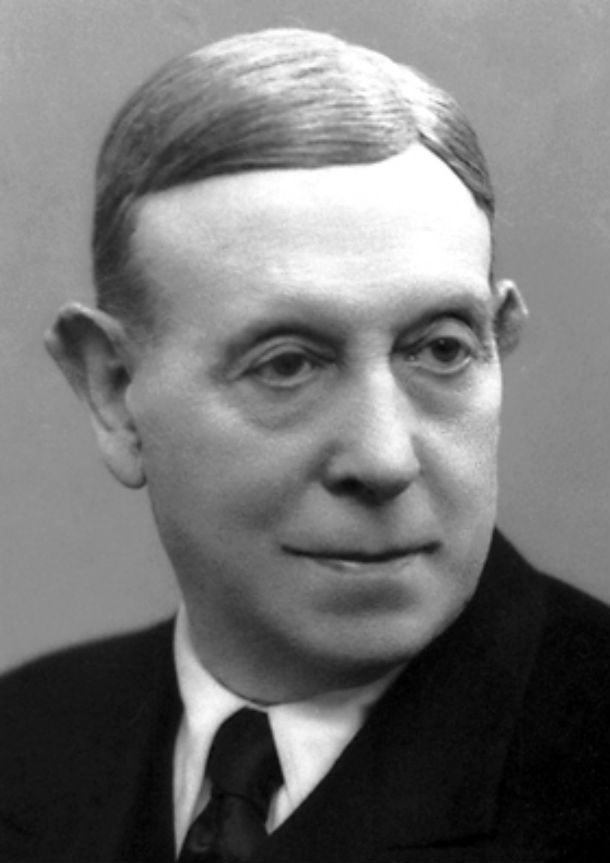 Source: psychcentral.com, Image: Wikipedia
Source: psychcentral.com, Image: Wikipedia As for the first prefrontal lobotomy in the United States, it was performed in 1936 on sixty-three-year-old Alice Hood Hammatt by Drs. Walter Freeman and James Watts. They also modified Moniz’s technique and introduced frontal lobotomies to America.
 Source: psychcentral.com, Image: commons.wikimedia.org
Source: psychcentral.com, Image: commons.wikimedia.org The most common tool doctors used to perform lobotomies was an ice pick. One of Dr. Freeman’s sons claimed that the first ice picks used in his father’s lobotomies were from their kitchen. Dr. Freeman would hammer an ice pick into each frontal lobe through the back of the eye socket. Ouch!
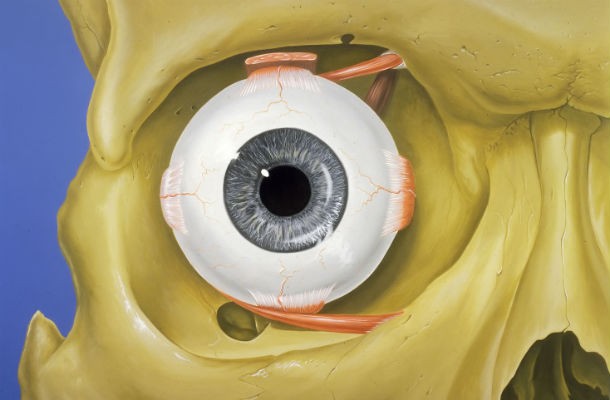 Source: psychcentral.com, Image: Wikipedia
Source: psychcentral.com, Image: Wikipedia Freeman who found Moniz’s techniques a bit stodgy, began experimenting with an outpatient procedure, where he would drive an ice pick into his patients’ brains near the top of their eye sockets. Once the pick was inside the brain, he would literally wiggle it around, cutting through the white and gray matter. It was not a precise surgery as you can tell. Using a hammer and his pick, he boasted that he could do a lobotomy in ten minutes and didn’t even need anesthesia. The ice pick method was too much for Watts, who distanced himself from his former partner.
 Source: psychcentral.com, Image: Wikipedia
Source: psychcentral.com, Image: Wikipedia Dr. Freeman strongly believed that if he could sever the nerve strands that connected the frontal lobe to the thalamus he would be able to help patients who displayed signs of mental illness. Although he spent endless hours performing brain dissections of “mentally ill” patients, he never found any difference between their brains and the brains of “mentally healthy” patients.
 Source: psychcentral.com, Image: Wikipedia
Source: psychcentral.com, Image: Wikipedia Walter Freeman performed 3,500 lobotomies in twenty-three states during his career, although many were not successful and resulted in patients dying.
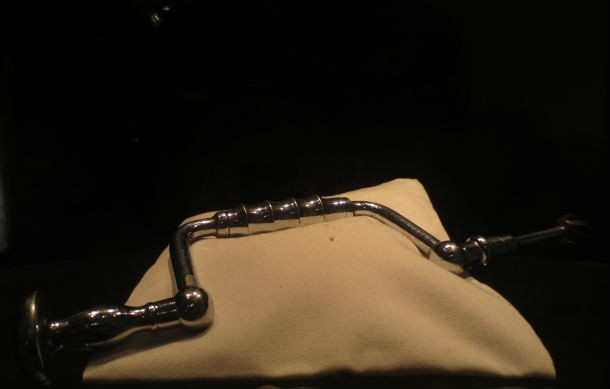 Source: psychcentral.com, Image: commons.wikimedia.org
Source: psychcentral.com, Image: commons.wikimedia.org Dr. Freeman’s daughter jokingly called her father the “Henry Ford of Lobotomy.” Not sure if his patients would find that funny though.
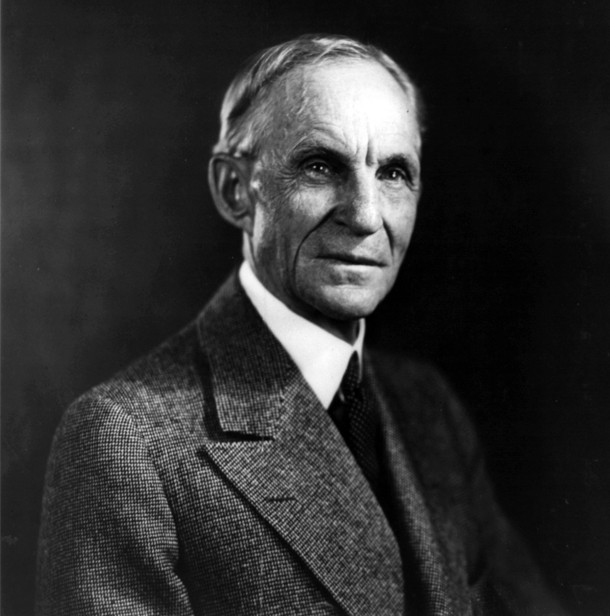 Source: psychcentral.com, Image: Wikipedia
Source: psychcentral.com, Image: Wikipedia Sigrid Hjertén, a legendary twentieth-century painter and major figure in Swedish modernism, was another victim of lobotomy. After she was diagnosed with schizophrenia, she was permanently hospitalized at Beckomberga Psychiatric Hospital in Stockholm, where she had a botched lobotomy and died of complications in 1948.
 Source: psychcentral.com, Image: Wikipedia
Source: psychcentral.com, Image: Wikipedia Scandinavian hospitals lobotomized about 2.5 times as many people per capita as hospitals in the United States. Sweden lobotomized at least 4,500 people between 1944 and 1966, with the majority of the patients being women.
 Source: psychcentral.com, Image: Wikipedia
Source: psychcentral.com, Image: Wikipedia During the early 1940s, lobotomies began to be viewed as a miracle cure in Britain. It is estimated that British surgeons performed proportionately more lobotomies than the number done in the United States at that time.
 Source: psychcentral.com, Image: commons.wikimedia.org
Source: psychcentral.com, Image: commons.wikimedia.org Warner Baxter, an Academy Award winner for Best Actor and the highest-paid actor in Hollywood of his time (1936), was one of the first famous victims of lobotomy. As he grew older he suffered from arthritis and underwent a lobotomy procedure to ease his pain. Unfortunately, he died shortly after the surgery of pneumonia due to post-surgery complications.
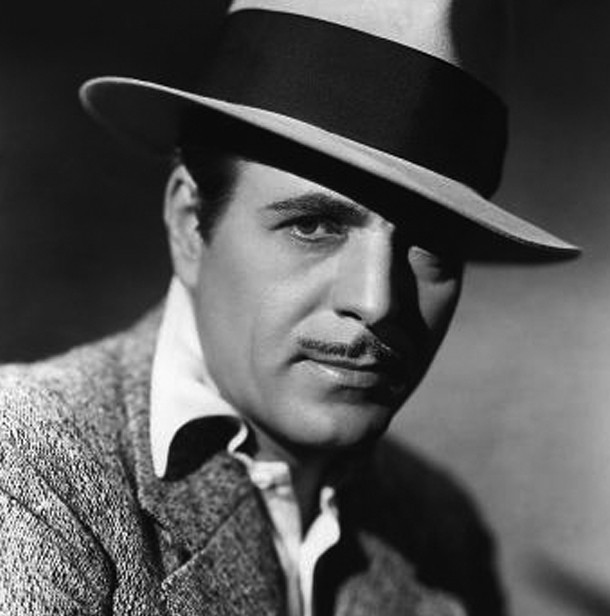 Source: psychcentral.com, Image: Wikimedia
Source: psychcentral.com, Image: Wikimedia Rosemary Kennedy, President John F. Kennedy’s sister, underwent a prefrontal lobotomy at age twenty-three, which left her permanently incapacitated. Rosemary spent the next six decades hidden from the public in a Wisconsin Catholic institution, where she was cared for by nuns.
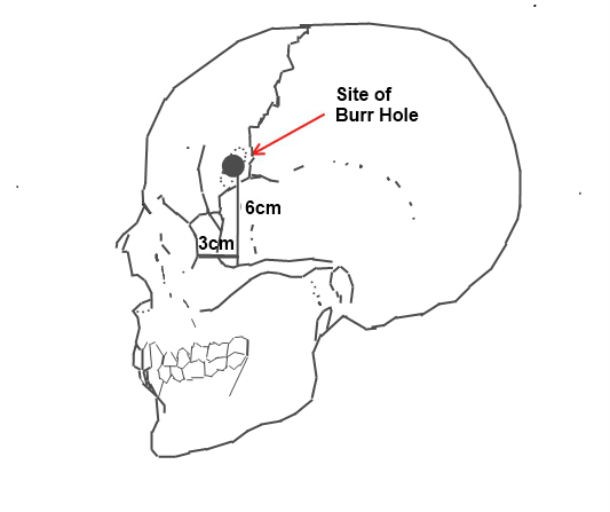 Source: psychcentral.com, Image: commons.wikimedia.org
Source: psychcentral.com, Image: commons.wikimedia.org Her father scheduled a lobotomy without telling his wife because in his eyes Rosemary was mentally impaired and didn’t fit in with the rest of the family.
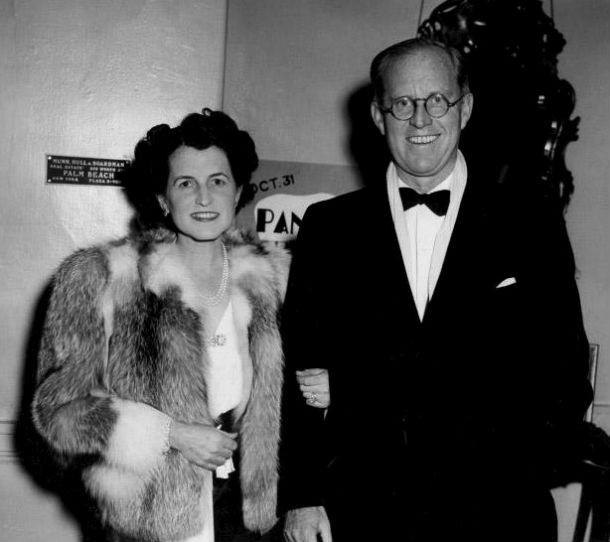 Source: psychcentral.com, Image: Wikipedia
Source: psychcentral.com, Image: Wikipedia Ironically, when Rosemary died in 2005 she was the fifth of the Kennedy children to die but the first to die of natural causes.
 Source: psychcentral.com, Image: Wikipedia
Source: psychcentral.com, Image: Wikipedia During the mid-1950s a new antipsychotic drug made lobotomies obsolete as a common practice; its name was Thorazine.
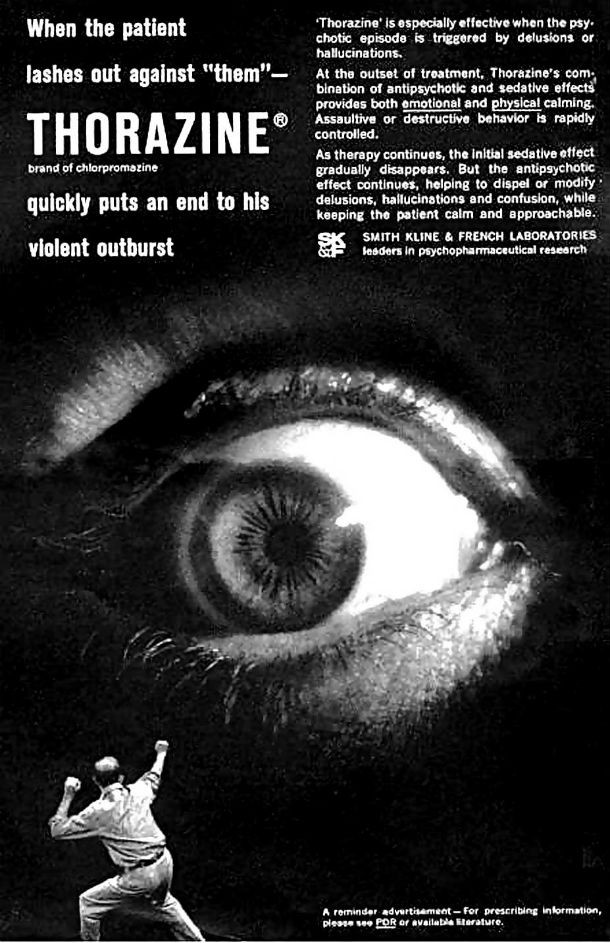 Source: psychcentral.com, Image: Wikipedia
Source: psychcentral.com, Image: Wikipedia Thorazine was at first regarded as a “chemical lobotomy.” Although the results were not always conclusive, at least a person could simply stop taking the drug. A lobotomy, on the other hand, is irreversible.
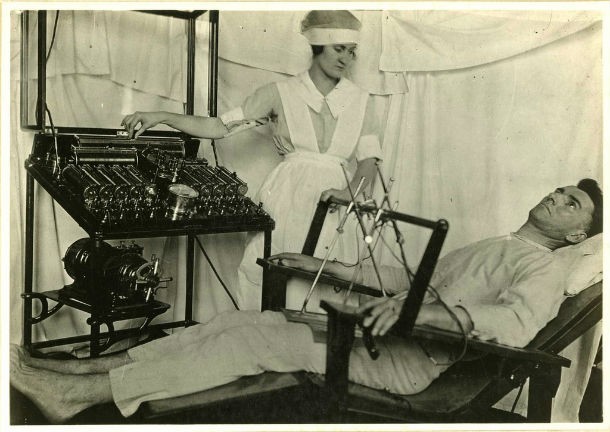 Source: psychcentral.com, Image: Wikipedia
Source: psychcentral.com, Image: Wikipedia Despite the catastrophic side effects lobotomies had on their patients, Dr. Freeman would call a lobotomy “successful” if the patient was no longer agitated. Keep in mind that most of the patients who survived had to be retaught how to use the toilet and how to walk but according to Dr. Freeman that was just a minor detail.
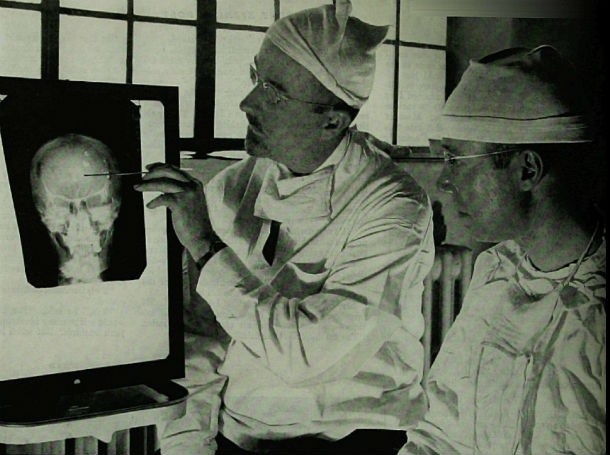 Source: psychcentral.com, Image: Wikipedia
Source: psychcentral.com, Image: Wikipedia An excellent account of the effects of lobotomy, and of the ethical implications of it as a procedure, can be found in Ken Kesey’s novel One Flew Over the Cuckoo’s Nest, which was made into a film in 1975, for which Jack Nicholson won the Best Actor award.
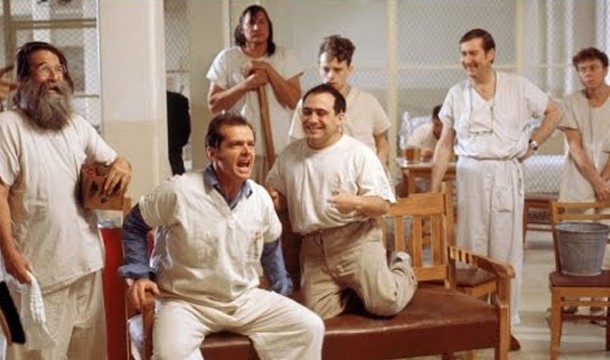 Source: psychcentral.com, Image: whatculture.com
Source: psychcentral.com, Image: whatculture.com 


























